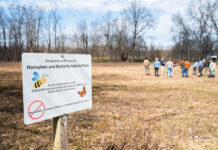DES MOINES, Iowa — DuPont, the University of Missouri and the USDA Agricultural Research Service are collaborating to pool soil mapping resources, predictive technologies and expertise to help growers improve crop yields through better nitrogen application management and other field input planning.
The public-private effort aims to enhance sustainable crop production through field and crop modeling that targets the specific soil, climatic, watershed and production conditions within producers’ fields with real-time information.
Three-year agreement
The three-year exclusive agreement among DuPont Pioneer, the University of Missouri and USDA-ARS will focus on precision agriculture sensors and soil mapping, including the characterization of soil types, topography and watersheds.
Through a unique computerized process offered by DuPont, higher-resolution soil information will enable improved placement and management of crop inputs such as nitrogen fertilizer.
The enhanced soil maps build on public soil survey data and will support Decision Agriculture Services provided by DuPont.
Soil analysis procedures will better identify unique land areas called Environmental Response Units (ERUs). These ERUs can then be used to develop a variety of management zones. A Pioneer adviser will assist growers in tailoring input and management plans.
This University of Missouri and USDA-ARS collaboration will provide vastly improved soil mapping resolution.
“Management decisions strongly depend on how crops respond to the soil and landscape,” said Brent Myers, agronomist, University of Missouri. “Public soil maps are very valuable, but we can now track differences in fields at a much higher resolution than previously available.
By using high resolution elevation data and landscape watershed information, producers can better determine water and nitrogen movement on the section and county levels.
Together with soil and productivity information, growers can more accurately plan, place and manage nitrogen applications on a real-time basis.









